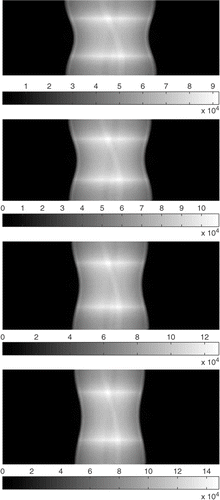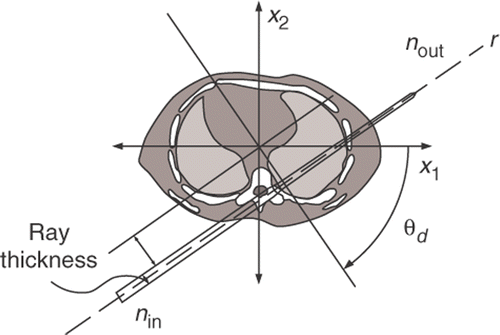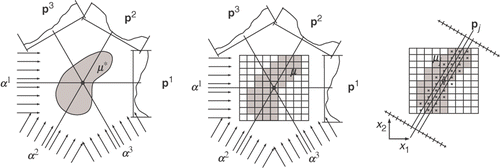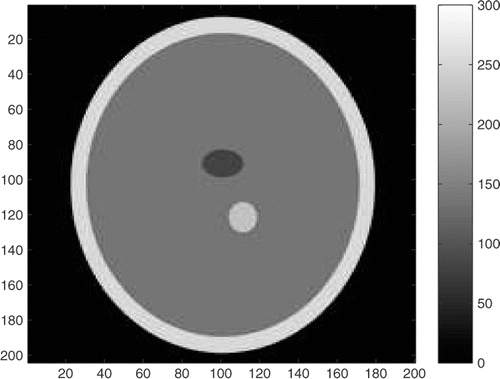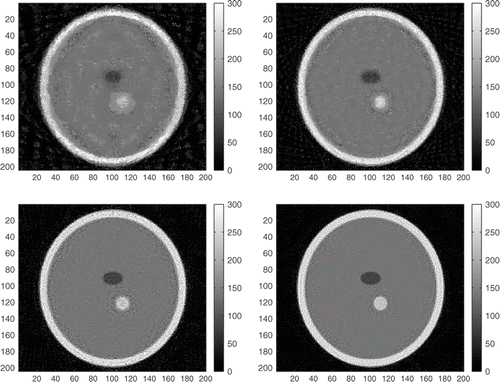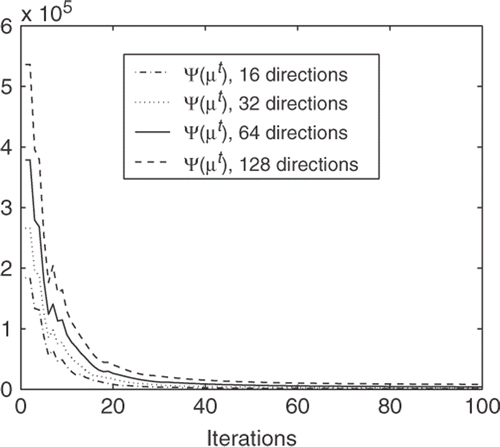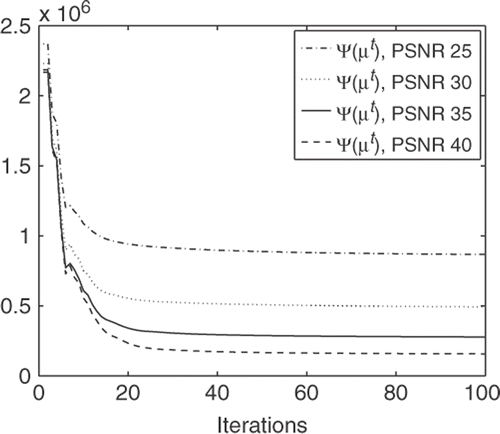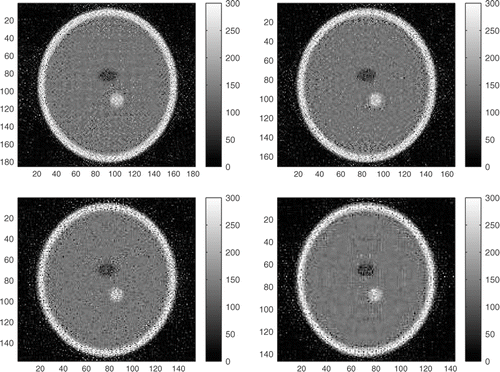Figures & data
Table
Figure 4. Projection data for 16, 32, 64 and 128 directions. The abscissa corresponds to p* for each direction and the ordinate to the d-th direction. The intensity scale is the same for all images.
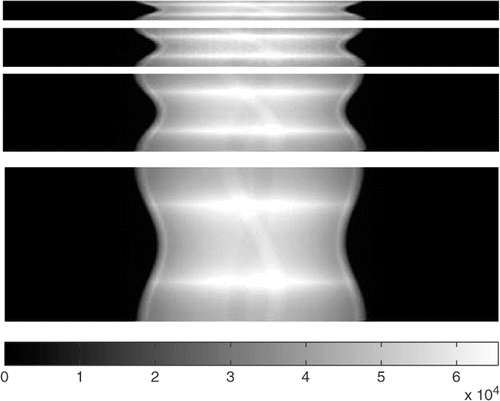
Figure 7. Projection data for PSNR 40 dB, 35 dB, 30 dB and 25 dB (128 directions). The abscissa corresponds to p* for each direction and the ordinate to the d-th direction.
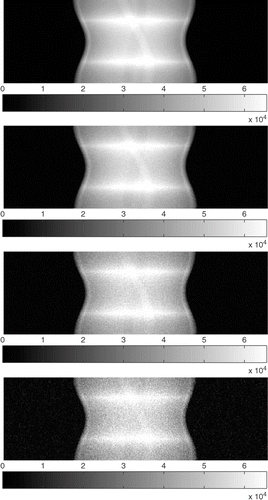
Figure 8. Results for the gΨ reconstruction method from noise data with 128 directions for PSNR 40 dB, 35 dB, 30 dB and 25 dB (128 directions).
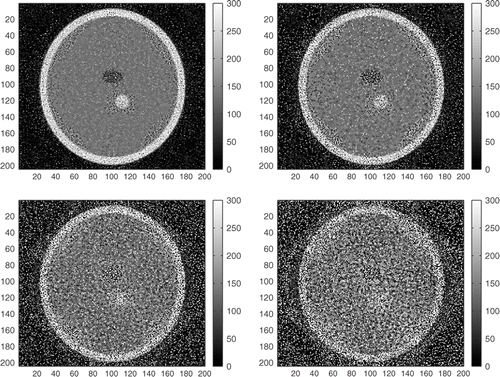
Figure 10. Projection data for different discretizations (1.1, 1.2, 1.3 and 1.4 spacings) and 128 directions. The abscissa corresponds to p* for each direction and the ordinate to the d-th direction.
